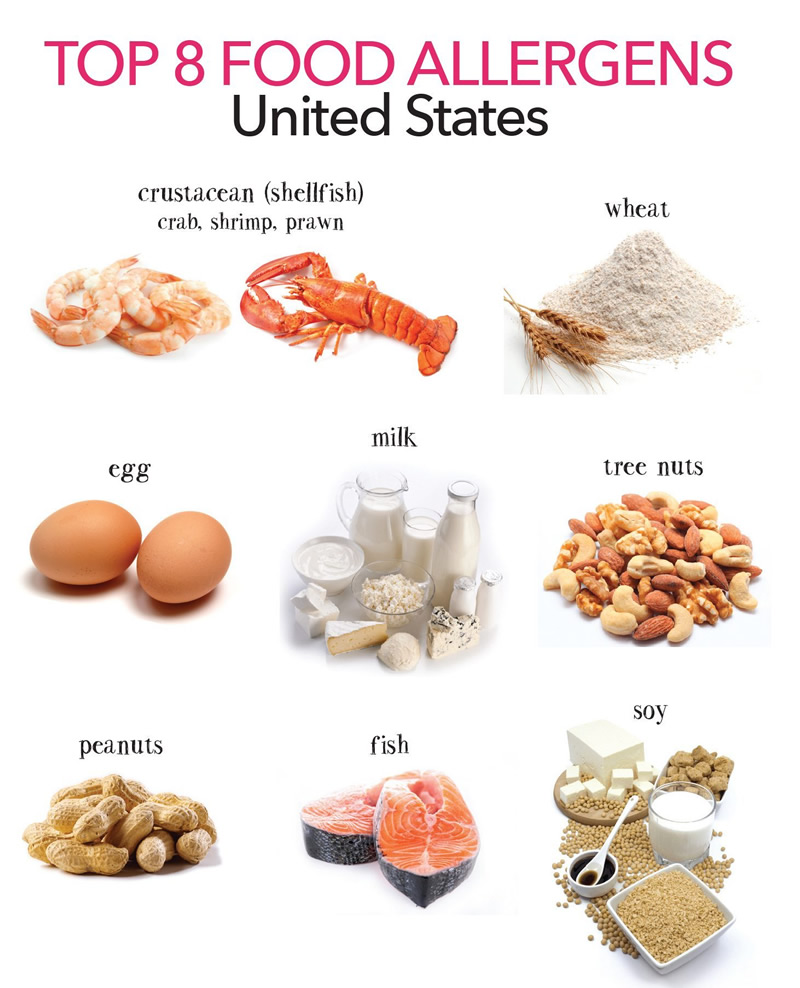A New Study Shows Adult-onset food allergies are Higher than Projected
Increased awareness of food allergies and dietary restrictions has prompted more research on the subject. The findings on adult-onset food allergies from a new research study conducted by Science & Outcomes of Allergy & Asthma Research (SOAAR) are fascinating and often spark more questions than answers. This is hopeful for many of those who live with uncomfortable and sometimes deadly reactions to certain foods.
SOAAR Study
The SOAAR study published in The Journal of the American Medical Association (JAMA) found that 10.8% of US adults (>26 million) have at least one food allergy, and a quarter of these adults did not have food allergies as a child. Compare that to the Food Allergy Research and Education website that estimates that 7.8% of minors in the U.S. (approximately 1 in 13 children) have a food allergy.
While some children will carry their food allergies into adulthood, the results of the study led by Dr. Ruchi Gupta, MD, MPH, indicate that adult-onset food allergies are a very real thing. Not only will some previously allergy-free adults develop an allergy later on in life, but others will also develop allergies to additional foods. As told to Allergic Living, Dr. Gupta says, “We are now able to estimate that 31 million Americans have food allergies.” … “When you compare that to the previous estimate of 15 million, the significance of this emerging disease becomes obvious.”
Allergies vs. Intolerance
The SOAAR study was not without its controversy. In fact, many media sources focused on another statistic: 19% of adults believed that they were food allergic, but only 10.8% were food allergic at the time of the survey. That means that 9% of the participants believed that they had an allergy but really didn’t.
However, it is important to clarify that just because a person does not have an allergy does not mean they will not have a reaction to a certain type of food. There is a difference between allergies and intolerance. According to Allergic Living,
“A food intolerance or sensitivity can cause gastrointestinal distress, but it does not involve the immune system or an IgE antibody reaction to the proteins in food – and therefore is not an immune-based food allergy.”
The distinction lies in which system is having a reaction to a certain food. If the immune system reacts, it can be classified as an allergy. If it is a different system that provokes a negative reaction, then it can be considered an intolerance, which can be much more difficult to diagnose.
A food allergy occurs when the immune system overreacts to a food protein sparking an allergic reaction. For example, a person with a milk allergy (different than lactose intolerance) can have an immune-system reaction that ranges from mild (hives, swelling, itching, rash) to severe (loss of consciousness), and potentially life-threatening. Whereas a person with lactose intolerance will suffer temporary discomfort (cramps, gas, bloating, diarrhea, nausea) because they are unable to digest foods containing milk. It is not life-threatening. Regardless, both conditions should be taken seriously.
Most Prevalent Allergens
While there are more than 170 foods that are known to cause allergic reactions, eight foods cause more than 90% of allergic reactions. According to the SOAAR researchers, the most prevalent allergens are:
Shellfish – 2.9% or 7.2 million adults
Milk – 1.9% or 5.7 million
Peanut – 1.8% or 4.5 million
Tree nut – 1.2% or 3 million
Fin Fish – 0.9% or 2.2 million

Possible Causes
The results of this study could cause a breakthrough in discovering possible causes for adult-onset food allergies. Before, many believed that genetics was the main cause of food allergies, but genetics do not change throughout a person’s lifetime. Instead, an increasing number of researchers and dieticians believe that allergies could be caused by environmental factors.
Cathryn Nagler, a scientist and professor at the University of Chicago, believes that one such environmental factor is our microbiome, specifically changes in the bacteria of our gut.
She calls attention to the misuse of antibiotics and the loss of dietary fiber – both of which drastically change the type and amount of bacteria in our stomach and intestines. In an interview with Tonic, Nagler says that “Even if you personally shun antibiotics, they’re fairly stable as drugs, and they’re present in more foods and in our water supply than you’d like to know. The loss of dietary fiber from the diet has been observed pretty consistently. Americans are famously enamored with fast food, or processed food that all of which are low in fiber.”
She and other scientists are doing more research into our changing microbiome and how it may be a culprit in the rise of food allergies.
Possible Solutions
Unfortunately, there are no foolproof solutions for people who are diagnosed with a food allergy. They have to be extra cautious when choosing their foods at the grocery store, ordering in a restaurant, or eating at a business event. However, even then, there is a risk due to food labeling limitations.
As a community, we can also educate ourselves about food allergies to better accommodate our colleagues and guests who deal with this often deadly condition.
As for medical treatment, some doctors and nutritionists are experimenting with immunotherapy, exposing patients to small doses of the food that they are allergic to in hopes of building up a tolerance.
Gupta (and the SOAAR team), who has traditionally researched food allergies in children, says “With so many adults not outgrowing their childhood allergies and more developing new allergies as an adult, we need to focus our research on adults and potential factors contributing to this increase in adult onset food allergies.”
Scientists like Nagler also working on designing medication that introduces certain bacteria to the body that would aid in rejuvenating a healthy microbiome that can more efficiently defend against food allergies. This type of treatment still requires more research into the types of helpful bacteria, the best ways to introduce them to the body, and effectiveness.
If we want to help maintain a healthy biome, we could also follow Nagler’s suggestion and eat more fiber. Other than that, there is a lot of work to be done researching causes and solutions of adult-onset food allergies.



